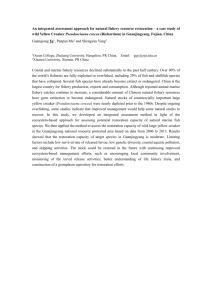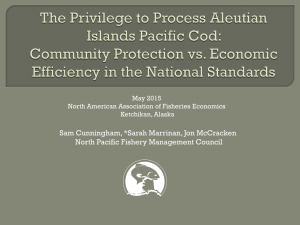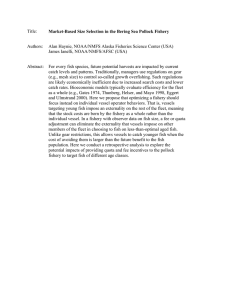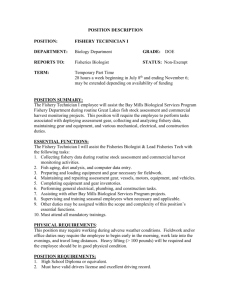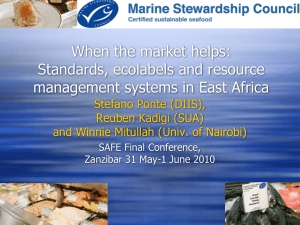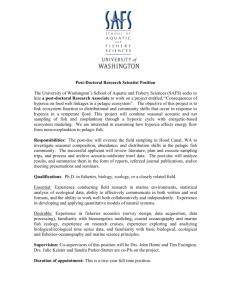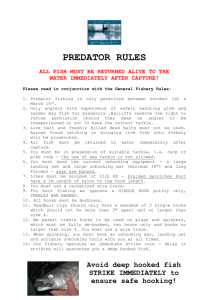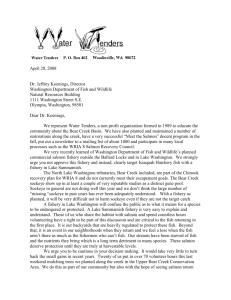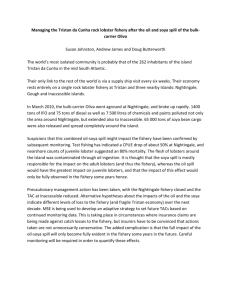10540_Ye-ed
advertisement
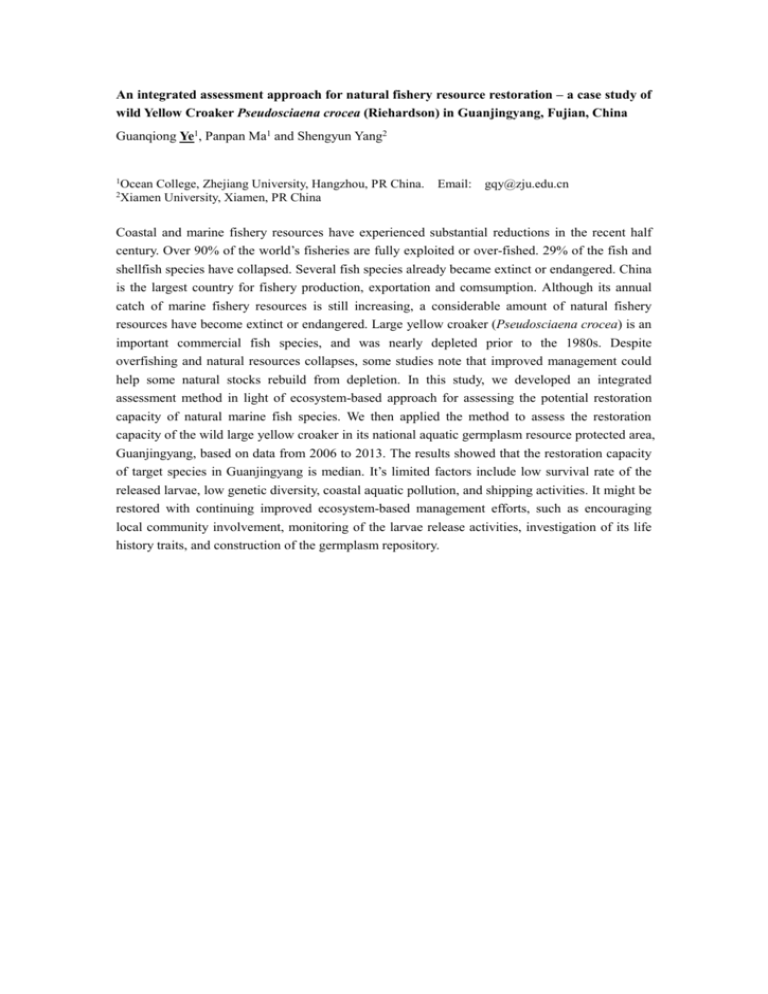
An integrated assessment approach for natural fishery resource restoration – a case study of wild Yellow Croaker Pseudosciaena crocea (Riehardson) in Guanjingyang, Fujian, China Guanqiong Ye1, Panpan Ma1 and Shengyun Yang2 1 2 Ocean College, Zhejiang University, Hangzhou, PR China. Xiamen University, Xiamen, PR China Email: gqy@zju.edu.cn Coastal and marine fishery resources have experienced substantial reductions in the recent half century. Over 90% of the world’s fisheries are fully exploited or over-fished. 29% of the fish and shellfish species have collapsed. Several fish species already became extinct or endangered. China is the largest country for fishery production, exportation and comsumption. Although its annual catch of marine fishery resources is still increasing, a considerable amount of natural fishery resources have become extinct or endangered. Large yellow croaker (Pseudosciaena crocea) is an important commercial fish species, and was nearly depleted prior to the 1980s. Despite overfishing and natural resources collapses, some studies note that improved management could help some natural stocks rebuild from depletion. In this study, we developed an integrated assessment method in light of ecosystem-based approach for assessing the potential restoration capacity of natural marine fish species. We then applied the method to assess the restoration capacity of the wild large yellow croaker in its national aquatic germplasm resource protected area, Guanjingyang, based on data from 2006 to 2013. The results showed that the restoration capacity of target species in Guanjingyang is median. It’s limited factors include low survival rate of the released larvae, low genetic diversity, coastal aquatic pollution, and shipping activities. It might be restored with continuing improved ecosystem-based management efforts, such as encouraging local community involvement, monitoring of the larvae release activities, investigation of its life history traits, and construction of the germplasm repository.
